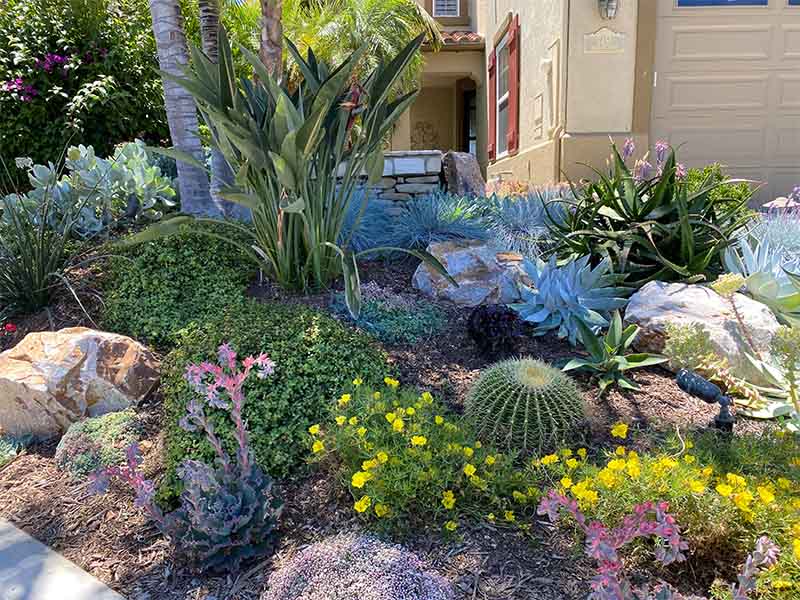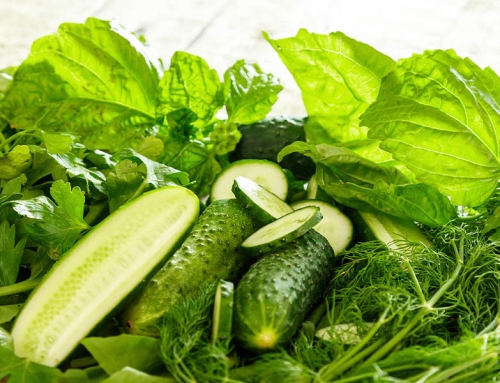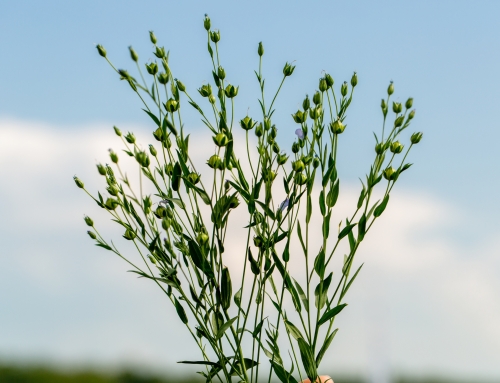Spring Advice – Texas Gardens

Welch Dental Group is here to give you a little spring landscape advice on top of your routine dental advice. We found a few articles that have input from Texas A&M University horticulturists, nursery professionals, growers, arboretum and botanical garden representatives, and other experts. Plants for Texas weather can be tricky so here is a quick guide of a few that we suggest to give you a better chance at blooms during spring and summer.
We found this article on Better Homes and Garden to copy and paste so we say it all right!
:strip_icc():format(webp)/blue-salvia-farinacea-flower-5ae768d5-b67a32bbff9943f4acb14cb3e4766aa7.jpg)
‘Henry Duelberg’ Salvia
Zones 7 to 9
Salvia farinacea ‘Henry Duelberg’ is a gorgeous Texas native plant that is easy to grow, attracts hummingbirds and butterflies, is exceeding drought-tolerant, and doesn’t attract deer. It grows between 2 feet and 3 feet tall and has flower spikes that are 1 foot long and covered in dark, purplish-blue flowers. Cutting back the spikes after the flowers are spent encourages the plant to rebloom. It can be in bloom virtually all season. Once established, this salvia is incredibly heat- and drought-tolerant. It’s perfect for water-wise gardeners. The only thing this plant doesn’t like is wet feet.
Lacy Oak
Zones 7 to 9
Some debate continues about the correct botanical name of this Texas native, but the common name is the same: lacey oak (Quercus laceyi, syn. Quercus glaucoides). A smaller oak, it reaches just 25-35 feet tall and wide, making it more in scale with residential gardens. The tree has a beautiful habit, resembling a miniature white oak. It makes a lovely shade tree and is also perfect in a garden of native Texas plants. Although lacey oak can be grown in east Texas, it is best adapted to the Hill Country and cultivated settings in west Texas. Lacey oak is highly tolerant of heat, drought, and high pH soils, once established.
:strip_icc():format(webp)/yellow-columbine-flowers-5e4ea2f4-f679440ecbb14c09b32ce19d37930623.jpg)
‘Texas Gold’ Columbine
Zones 5 to 8
Hinckley columbine is native to only one place in Texas and is very rare in the wild. ‘Texas Gold’ (Aquilegia chrysantha var. hinckleyana ‘Texas Gold’), a selection of this rare plant, has buttercup-yellow flowers with long, attractive spurs and fernlike foliage. The bright blossoms light up a shady border. Columbine can be a short-lived perennial but will reseed itself if you let the seedlings grow. ‘Texas Gold’ reaches 2-3 feet tall. It prefers well-drained soil, part shade, and adequate moisture, though it will tolerate some heat.
:strip_icc():format(webp)/lord-baltimore-hibuscus-c2907b4a-14c29dc79dc247f5b04152873a61a5d8.jpg)
‘Lord Baltimore’ Hibiscus
Zones 5 to 9
Who says native plants aren’t well-behaved and gorgeous? ‘Lord Baltimore’ hibiscus has enormous 10-foot-wide, bright scarlet flowers, and they bloom for an extended period—from July until frost. Once established, this tropical-looking perennial provides years of color. It is versatile enough to use in large decorative pots, in a perennial border, or in butterfly and hummingbird gardens. You’ll often see ‘Lord Baltimore’ growing near ponds because it loves moist soil. Growing to about 5 feet tall and wide, the plants die back to the ground in winter but regrow quickly each spring.
:strip_icc():format(webp)/red-sleeping-hibiscus-9a2ed4f1-2e9f4c6afd214114a6ad8ac321190eb7.jpg)
Turk’s Cap
Zones 7b to 11
Turk’s cap (Malvaviscus arboreus var. drummondii) is native to south Texas, where it is a perennial and makes an outstanding ornamental for shady sites. The flowers look much like hibiscus but never fully open, so they look like little turbans. The flowers appear in a range of colors from red to pink to white and attract hummingbirds and butterflies. It is a fast-growing shrub that reaches between 3 feet and 6 feet in height and width. It may not be hardy in north planting zones in Texas but could be used as an annual there. It’s drought-tolerant, once established.
:strip_icc():format(webp)/plumbago-flower-de685c91-1bd74229564c4a17a3bcf86c4ef82208.jpg)
Cape Plumbago
Zones 8 to 11
Another common name for cape plumbago (Plumbago auriculata) is sky flower because the blossoms are sky blue. This tender perennial loves the Texas heat and will flower profusely from May until frost. The flowers look a little like phlox and attract all kinds of butterflies. Luckily, deer don’t seem to find them very delicious. Cape plumbago can be left to sprawl as a groundcover or to fall over a wall. It responds well to pruning and can be kept in a neat mounded form or trained to climb a trellis. It does best in light, sandy soils with good drainage.
:strip_icc():format(webp)/salvia-mystic-spires-7e08895a-c6ad6cdd0ec24512a5abab7cc437a3fc.jpg)
‘Mystic Spires Blue’ Salvia
Zones 7 to 11
Salvia longispicata x farinacea ‘Mystic Spires Blue’ is a selection of another popular salvia called ‘Indigo Spires’. Besides inheriting a good compact form, ‘Mystic Spires Blue’ produces more blooms. Loads of blue flowers touched with silver bloom all season long and mix perfectly with other perennials and annuals as part of a colorful border. Tolerant of heat and humidity and rarely bothered by pests or disease, this perennial has no appeal to deer either. Too much love can kill these plants so use fertilizer and irrigation sparingly. Cut back to about 1 foot after the first frost.
‘John Fanick’ Phlox
Zones 4 to 9
Named for a San Antonio nurseryman, Phlox paniculata ‘John Fanick’ is a beautiful bicolor with lavender-and-pink blossoms. The foliage has a waxy texture that discourages powdery mildew, a disease that lesser phlox often succumb to. It has a compact form, growing about 3 feet tall and 2 feet wide, perfect for the middle or back of a perennial border. Lovely combined with ‘Mystic Spires Blue’ salvia, this perennial also makes good cut flowers. It tolerates heat and humidity. Grow it in moderately fertile, well-drained soil in full sun to part shade.
:strip_icc():format(webp)/chinkapin-oak-de759180-9ddfcb2430c9497382905f4dfc51238f.jpg)
Chinkapin Oak
Zones 5 to 7
Considered to be one of the most underutilized native trees, chinkapin oak (Quercus muehlenbergii) can grow quite tall in the East but generally remains in the 30- to 50-foot-tall range in Texas. The foliage is lustrous green and, in some years, develops a pleasing yellow, orange-brown to rich brown fall color. This oak is heat-tolerant and, once established, can tolerate considerable drought. Although adaptable, the tree prefers to grow in neutral to somewhat alkaline soil. It attracts hummingbirds and butterflies.
:strip_icc():format(webp)/Ilex-decidua-possumhaw-6c833b7a-cee10810576442fb8f6525cb6b9d5f69.jpg)
Deciduous Holly
Zones 5 to 9
A delightful small native tree, deciduous holly (Ilex decidua) is easy to grow and has an extended period of interest. It is fairly adaptable but prefers moist, acidic soil in sun or part shade. The small white flowers are not very showy, but the orange-red berries that the female plants produce are stunning. After the foliage drops in autumn, the slim gray branches are covered with berries that persist into winter. This is an outstanding choice if you hope to welcome wildlife, especially birds into the garden. You need both a male and female plant to ensure good berry production.
‘Lowery’s Legacy’ Cenizo
Zones 8 to 11
Leucophyllum langmaniae ‘Lowery’s Legacy’was selected because it flowers so profusely and so often. It is a slow-growing woody shrub that will eventually reach about 5 feet tall. The silvery foliage is quite handsome and provides a lovely contrast to dark green shrubs. The violet-blue bell-shaped flowers stand out beautifully against the silver leaves. Compared to many selections of Texas sage, it is less dependent on changes in humidity for flowering and will bloom more often. This sun-lover resents wet feet; be careful to avoid overwatering.
‘Grandma’s Yellow’ Rose
Zones 6 to 9
‘Grandma’s Yellow’ rose (Rosa ‘Nacogdoches’) has full, deep yellow, fragrant blossoms that repeat from spring until the first hard frost. Growing 4-5 feet tall and about 3 feet wide, every garden should find a place for this beauty. It needs sunshine—at least six hours a day of good light—and regular watering. Of course, it makes beautiful cut flowers. This rose should be hardy in most of Texas but in Zone 6, it might be wise to give it some winter protection.
‘Blue Princess’ Verbena
Zones 7b to 10
Verbena x hybrida ‘Blue Princess’ thrives in Texas heat. “Most people make the mistake of pampering it,” says Brent Pemberton, Texas AgriLife Research horticulturist. “It must be planted in the sunniest, best-drained spot in your landscape. It will not bloom profusely unless the plant gets plenty of sunlight.” You can’t be afraid to prune it either. After the first exquisite flush of lavender blooms, give the plant a haircut. Pruning encourages another round of flowers and keeps the plant from getting lanky and unkempt-looking. This perennial grows about 1 foot tall.
:strip_icc():format(webp)/ruellia-brittoniana-flowers-f3fd4d03-6d397c3fdc054dd89c75090bfb56dc4b.jpg)
Dwarf Mexican Petunia
Zones 8 to 11
Trumpet-shaped, violet-blue flowers are born on the tips of the 1-foot stems and are extremely showy, in part because of the clouds of butterflies they attract. After the plant finishes flowering for the first time, cut it back about halfway to encourage another flush of blooms. Mexican petunia (Ruellia brittoniana) is very adaptable and will tolerate wet and dry soils. This perennial prefers full sun and will tolerate shade, but it will flower less in low-light situations. This dwarf variety grows less aggressively than the species and is a great choice for a long season of color.
:strip_icc():format(webp)/pink-roses-full-bloom-0e084436-47db688b6ad94b689fa3c38248597ef4.jpg)
‘Belinda’s Dream’ Rose
Zones 5 to 9
‘Belinda’s Dream’ was the first rose to be named a Texas Superstar. It was also the first rose to receive the prestigious Earth-Kind designation, meaning it’s been proved to be one of the best flowering roses that requires the least amount of care. Earth-Kind’s tagline: If you can grow weeds, you can grow Earth-Kind roses. ‘Belinda’s Dream’ grows to about 4 feet tall and 3 feet wide. The fragrant pink blossoms are fully double with a whopping petal count of more than 100. The blue-green foliage provides a lovely background for the delightful blooms.
Visit Welch Dental Group today – a safe, comfortable, and welcoming environment for every dental patient, including you and your family. Here at our practice, you will feel involved in your care when you are given a choice in the way your treatment is provided. Call us at 281.395.2112 or fill out this contact form to schedule an appointment.





